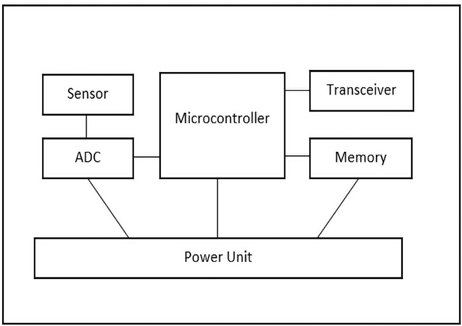A node should always have the appropriate memory to be able to execute the tasks it needs to get done. This may be in the form of on-chip or external flash memory. Most of the time, flash memory is used because of its cost-effectiveness.
Power source
The power source for nodes is generally in the form of a battery or capacitor. Many sensors are designed to have energy-saving schemes, such as utilizing solar power or kinetic energy to recharge them. Nodes may also have power-saving policies such as sleep modes to conserve their power usage and use them when they are active if they do not need to be continuously active.
Sensors
As expected, sensors are a crucial part of networks. The signal that is obtained from it is converted into digital form using analog-to-digital converters; this is because microcontrollers can only process digital data. Sensors can be divided into three main categories: active sensors, passive and omnidirectional sensors, and passive and narrow-beam sensors.
Active sensors actively survey their surroundings, similar to a radar sensor. Passive and omnidirectional sensors monitor data without affecting the environment by continuously probing it. They can pick up data from all directions.
Finally, passive and narrow-beam sensors are passive but have an understanding of the direction of measurement, with this being supported by cameras. They may also be equipped with extra units such as a GPS device, along with a motor to help them move in the direction they need to:

Figure 5.3 – A simple microcontroller and its associated nodes
Now, we can discuss the final important component: the operating system.
Operating system
Operating systems provide the software infrastructure for controlling the sensor nodes. The operating system is responsible for managing the node’s resources and executing the tasks that it needs to. TinyOS is a popular operating system that is used for this purpose as it is open source and event-driven while also being designed to be lightweight, energy-efficient, and easy to program. Its architecture allows for easy extension and tailoring to fit the needs of many users’ applications and provides libraries and tools that are generally needed within WSNs.
Next, we will discuss managing APIs when building solutions for WSNs.
Managing APIs
APIs are very important within WSNs as they help different components of the network communicate with each other. It operates within the application layer, allowing the layer to access the functions of the operating system, such as power management and data collection.

